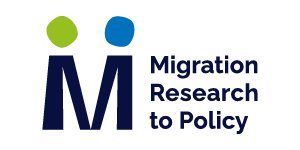
Funding
Horizon Europe
Geographic focus
Europe
Dates
2 January 2020 –
31 July 2023
About
Decision-making tools to help European policymakers anticipate and respond to future migration scenarios.
Project Outcomes
- Advanced the methodology of scenario generation and furthered the understanding of the conceptual foundations of European migration flows.
- Derived a distinctive set of custom-made harmonised statistical estimates of migration flows.
- Developed and applied rigorous and innovative methods for simulating migration flows, describing scenario uncertainty, and providing early warnings.
Key Findings
- Even with advances in technology and the best science, we cannot predict the scale of migration flows. Uncertainty is a key feature of human migration and not just a gap in policy or scientific evidence.
- Better forecasting can help reduce uncertainty about migration flows in the short term, but, there will always be unpredicted migration flows. To respond, we need to actively prepare for these situations; long-term scenario planning, creating contingency plans, and designing policies flexibly can help.
- Migration drivers do not operate in isolation. Their interplay increases the unpredictability of migration, especially when armed conflicts or climate change are also at play. One very important and interconnected driver of migration is when people are nervous or unclear about if and how policies will change (what we call policy uncertainty).
- We can have better forecasts and mitigate some uncertainty, but to do that we need more data; larger amounts of imperfect or partial data are more informative than smaller amounts of higher-quality data.
- Migration flows to Europe, even high-impact ones, do not substantially change the demographic foundations of Europe. Migration plays an important role in the population and labour force dynamics across the EU, but Europe’s demographics are shaped primarily by low fertility and an aging population, not by migration flows.
Highlighted Publications and Tools
- White Paper – Migration Uncertainty: Towards Foresight and Preparedness.
- Data Inventory – data on migration drivers for modelling purposes
- Policy Database – tracks migration policy changes enacted by European countries between 1990 to 2020
- Migration Estimates Explorer – harmonised migration estimates for Europe
- Migration Scenarios Explorer – projections of population in 31 European countries by migration scenarios
Coordinator
Jacob Bijak, Professor of Statistical Demography, University of Southampton
Partners
- University of Southampton
- Danube University Krems (DUK)
- International Institute for Applied Systems Analysis (IIASA)
- Max Planck Society – Population Europe (MPG-PE)
- Netherlands Interdisciplinary Demographic Institute (NIDI)
- Peace Research Institute Oslo (PRIO)
- University of Oslo (UiO)
- Institut National de la Recherche Scientifique (INRS), Canada
Contacts
Related projects
Want your research to be featured in our database?
We add research projects with significant funding, stakeholder engagement, and impactful results.









